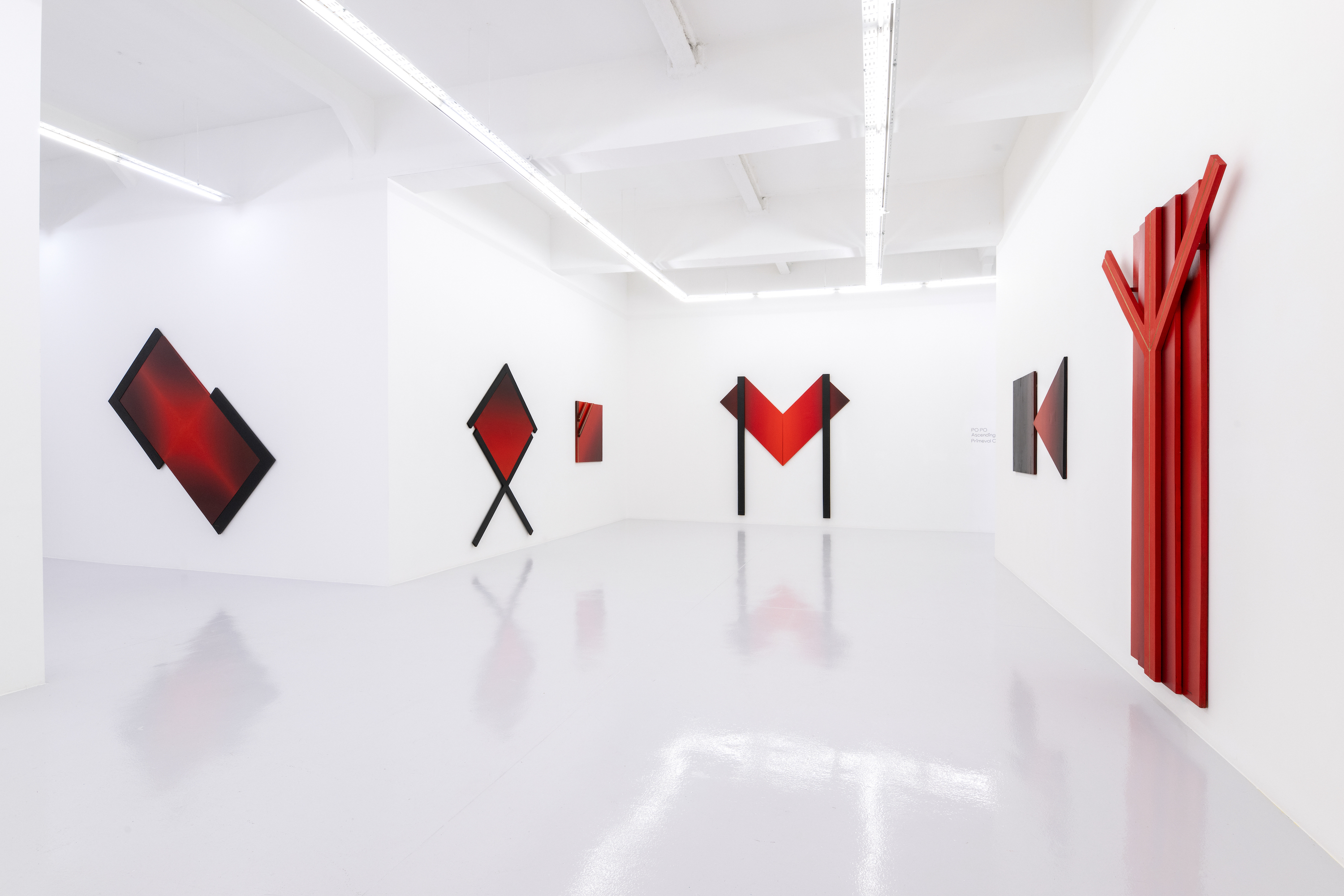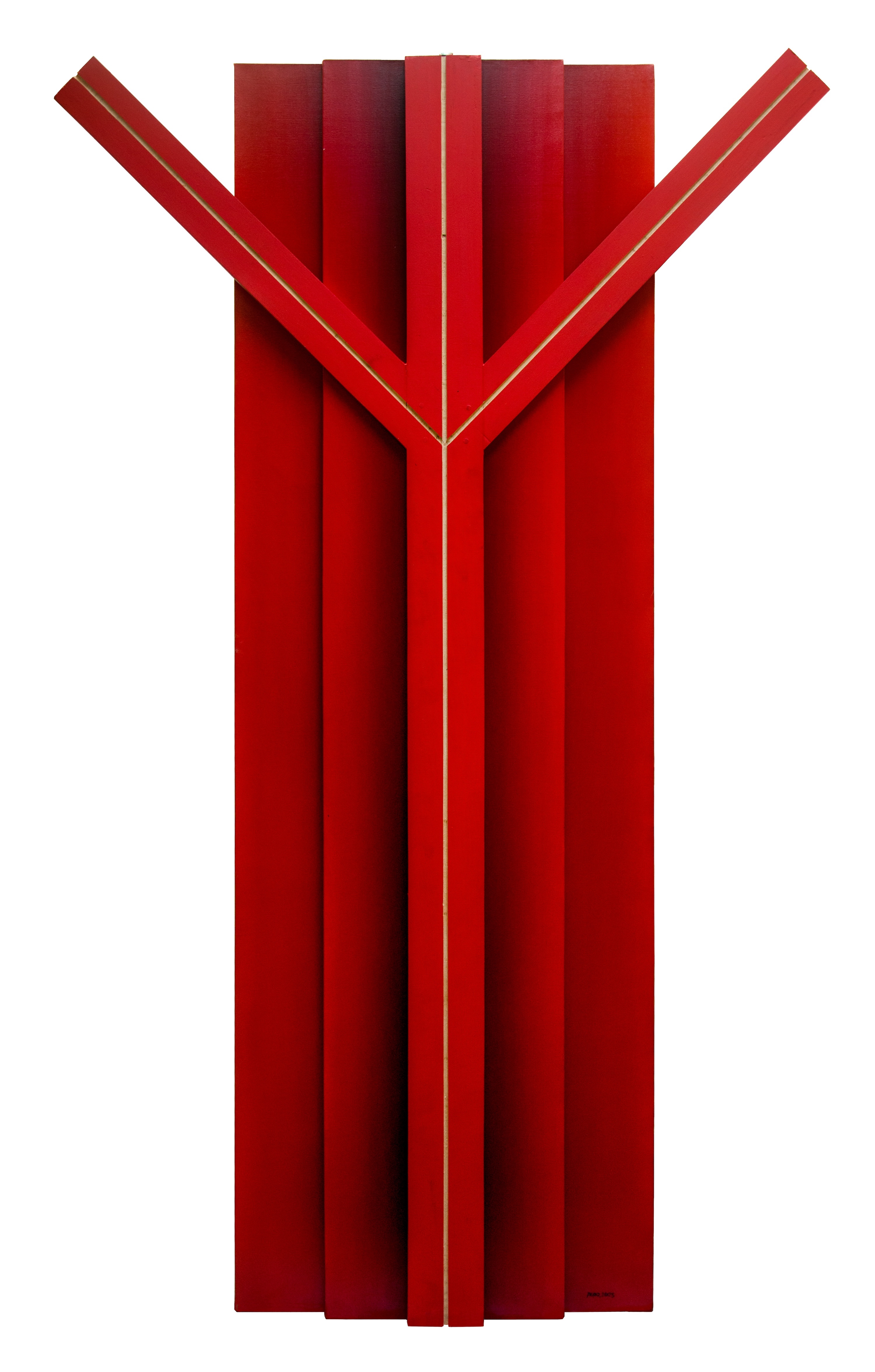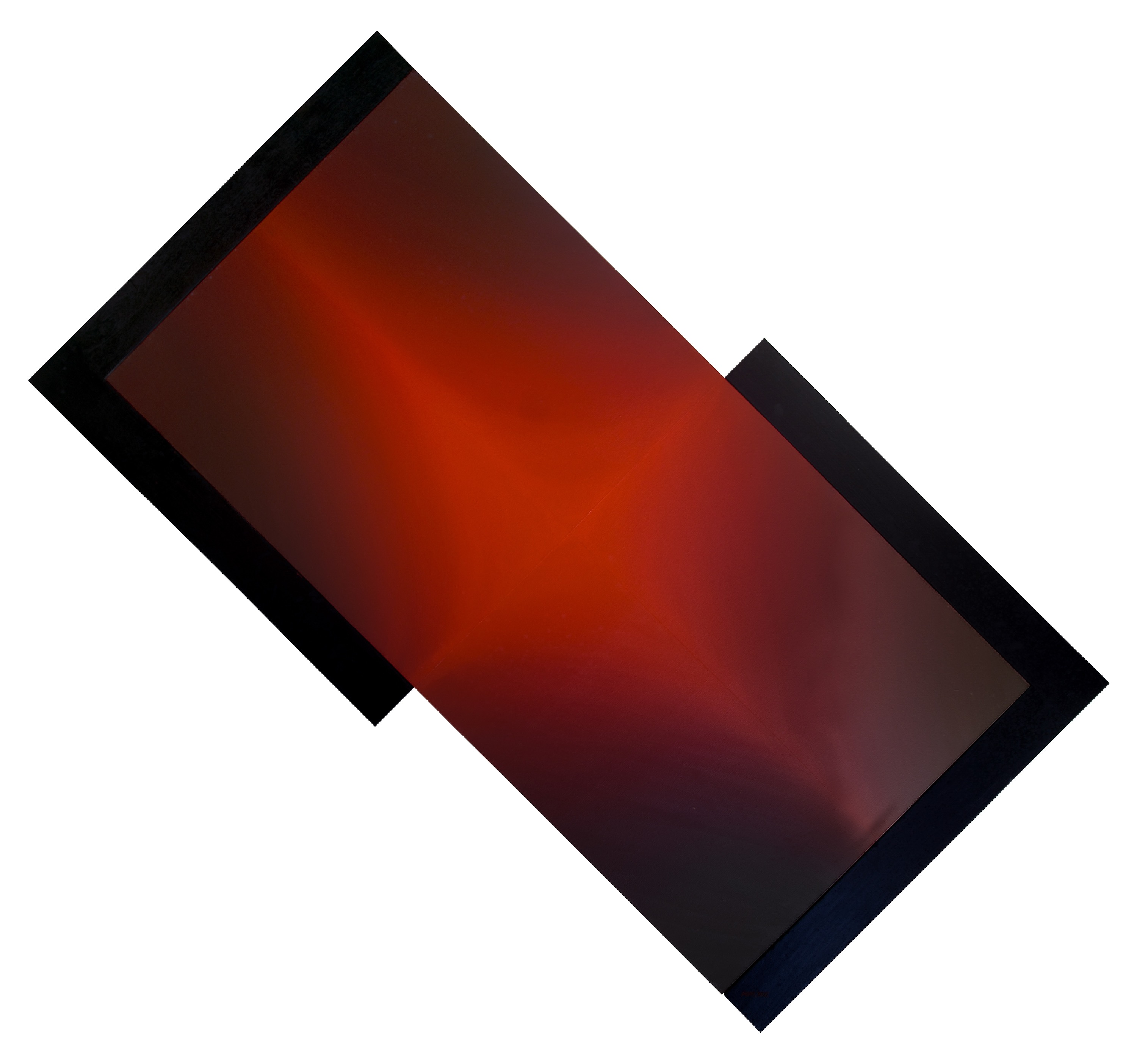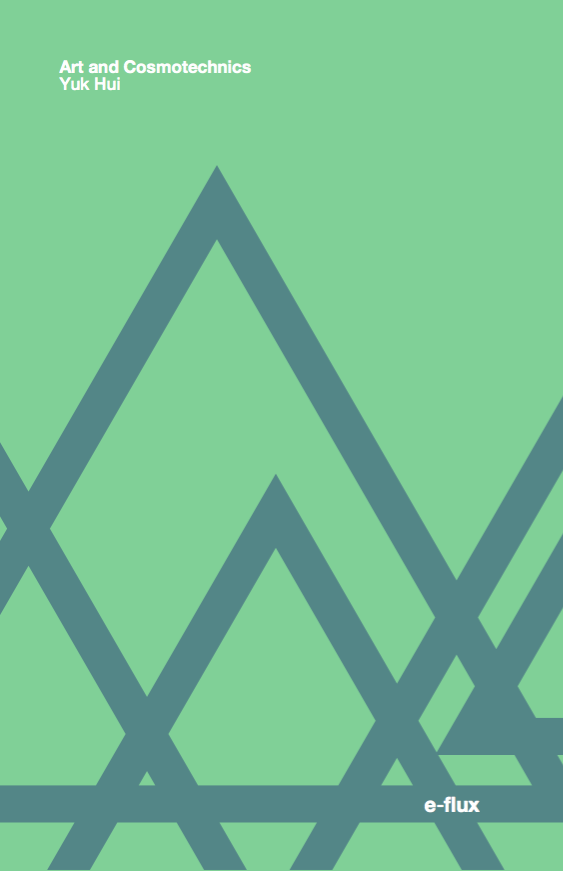April 27–June 2, 2024
Po Po is fascinated by how alphabets, when stripped back to their most abstract forms, can still convey meaning. In an exhibition inspired by sources including Burmese scripts, Egyptian hieroglyphs, and Futhark runes, viewers encounter the artist’s own eclectic symbology. These combinations of shaped canvases stretched on round, triangular, rectangular, or square frames exist at the edge of legibility. The color palette is exclusively black and red, painted in solid blocks or subtle gradations of tone.
At first glance, due to the stark shapes and austere colors, the twelve works on show could be read as a part of a conversation about geometric abstraction in 1970s Minimalism. But the curatorial essay tells us that Po Po, whose output includes paintings, performances, and installations, conceived of these works in the 1980s when Myanmar was under military rule and isolated from the wider world. He didn’t execute them then for reasons including disillusion after the bloody student protests of 1988, which resulted in his hiatus from artmaking in the 1990s. So despite the works’ outward resemblance to “contentless” abstraction in the Western tradition, they are better understood as part of the artist’s longstanding investigation into signs, symbols, and codes, with meanings that flicker in and out of focus.
The titles of these new works are weighty abstract nouns: Strength, Mankind, Obstruction. Sometimes the relationship between the two seems literal, as in the case of Reflection (2022), a mirror-image composition which comprises two circles side by side and separated by a vertical line. Elsewhere, the connection between title and image is less clear. Two black sticks, one long and one short, with a red parallelogram between them, is titled Strength (2021). Is this due to the formal resemblance to a barricade, which is, erm, strong? Or could it be a reference to an unfamiliar, archaic language?
The most powerful works don’t require such tortuous rationalizations. They are immediately yet unexpectedly persuasive. Ending (2023) is an almost two-meter tall, mostly black painting. In the center is a peace sign without the enclosing circle, and with the vertical axis extending upwards. Behind this spine, red paint glows like a penumbra. The effect is sarcophagic and heavy. The peace sign, comprising the semaphore signals for N and D, was designed as a symbol for Nuclear Disarmament in the 1950s. With its elongated spine, it resembles a missile about to be launched, or the inverted, broken Nero Cross viewed by some Christians as satanic. Does this sense of menacing finality come from the title, the artwork itself, or the visual associations on which it draws? Probably an interplay of all the above.
“Ascending Primeval Codes” picks up from Po Po’s “Primeval Codes,” held four years ago at the same gallery, which also showed black-and-red canvases with symbolic titles. The new show features larger, higher-key instantiations of Po Po’s private world of symbols and implies greater access to materials: Wealth (2023) has a twenty-three-karat gold bar embedded in the composition and references the design of a crossed cheque, with two diagonal strokes at the top left hand corner of a square canvas. What it lacks is the mathematical economy of the older work, in which a small change between paintings created a great shift in meaning. For example, a red bar bisecting a black square vertically is titled Freeze (1988/2020), but when it is transposed into a diagonal, the work is called Wholeness (1988/2020).
Yet both exhibitions suggest a system (based on permutations of triangles, squares, and circles) without ossifying into one. Here, for example, Ending has its clear opposite, Spiritual (2023). The latter is a red painting with the peace sign turned upside down, with the two arms reaching up like a tree, or a stick figure in jubilation. Elsewhere, triangles seem to suggest opposition of some kind (Challenge, Obstruction, both 2020), while quadrilaterals with glowing diamond gradations appear to imply abundance and harmony (Harvest, 2021, Balance, 2022). But these are tendencies, not hard-and-fast rules.
Plugging Po Po back to his home context opens up another, potentially provocative dimension to his work. Abstraction itself was viewed with suspicion by the Burmese junta, which favored socialist realism. Red was also associated with democratic movements, as the main color of Aung San Suu Kyi’s National League for Democracy flag. The show’s obsession with codes must thus be understood in the context of a heavily censored society in which there is a renascent armed struggle against military dictatorship, in which speaking truth to power can result in jail or exile.
But above all, the works reflect Po Po’s deep and idiosyncratic study of alphabets and other communicative systems. Isolating these symbols from their contexts led him to his own versions of fundamental forms, and gives rise to meaning through some commingled interaction of image and title. This series generates two contradictory impulses: that signs are historical and cultural in nature (the particular association of red with democratic freedom in Myanmar), but also that there is some supra-cultural and universal meaning that can be directly apprehended. A code that you don’t need to crack. “Ascending Primeval Codes” speaks with a forked-tongue, inviting yet resisting understanding, questioning and affirming the communicative transparency of art as a language.







